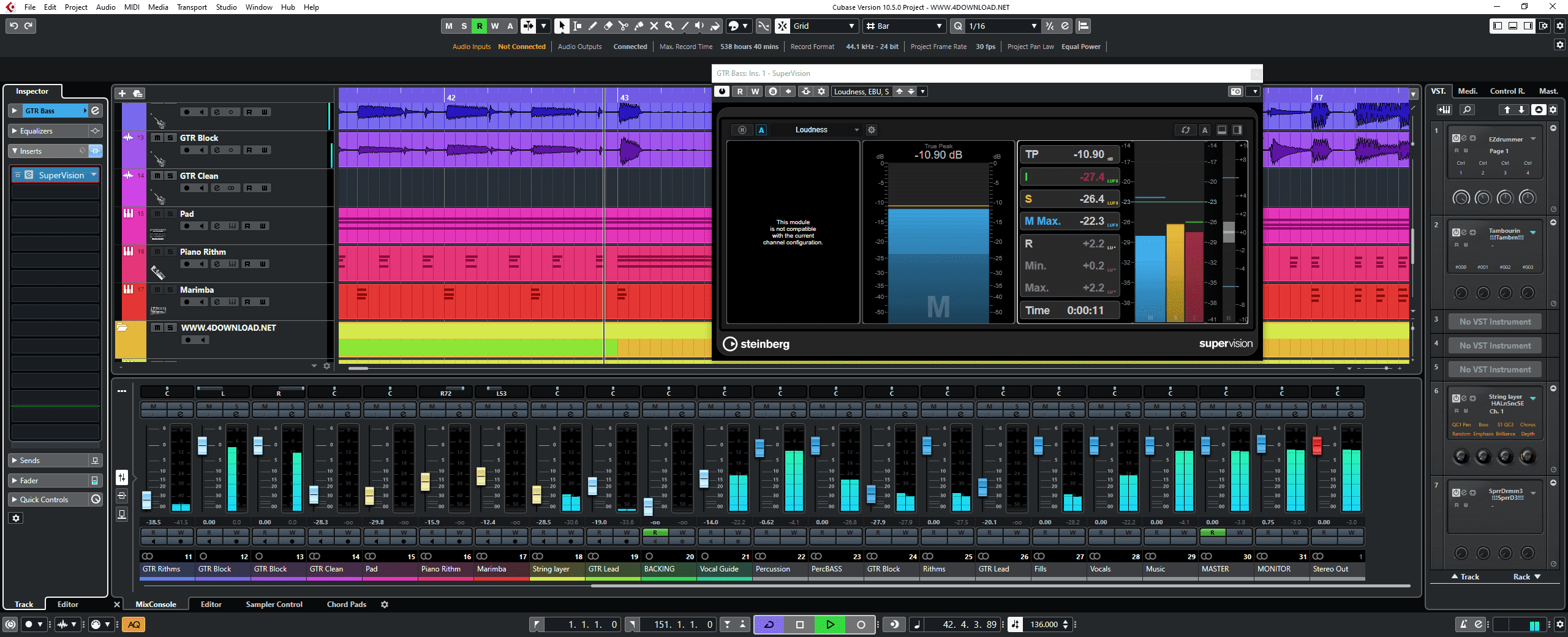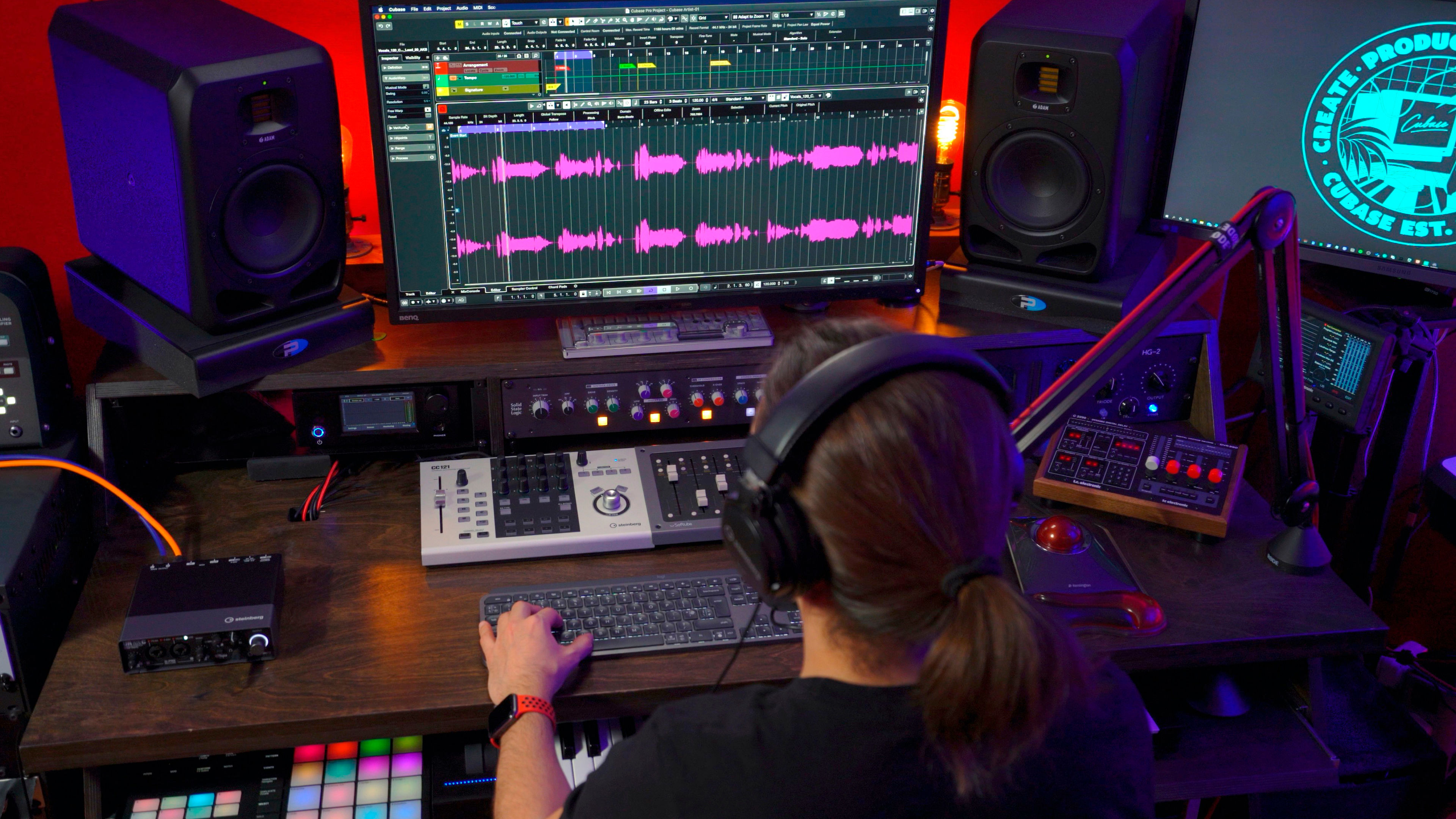Offers in-app purchases. Add to Wishlist. Quickly and easily capture your musical ideas as soon as they arrive and turn them into professional-sounding songs with the multi-award winning Cubasis 3. Enjoy performing, recording, mixing and sharing your music in no time, wherever you are, right there on your smartphone and tablet. Cubase 4.0 marked the end of the SX, SL and SE designations, with SX becoming Cubase 4, SL becoming Cubase Studio 4 and SE becoming Cubase Essentials 4. It introduced the new VST 3 plug-in standard, and also removed support for the increasingly irrelevant DirectX plugin standard. Cubase Studio 5.5.3. The Cubase familiy. The Cubase family comprises three members: Cubase 5, Cubase Studio 5 and Cubase Essential 5. Each one features our acclaimed crystal-clear 32-bit Steinberg Audio Engine and the latest VST3 and ASIO technologies that will make your Cubase experience the best it can be! The feature set of each version was. Try Cubase now for 30 days. Get your free 30-day trial version of Cubase, and try out all the features that Cubase has to offer — with no restrictions. Subscribe now and experience our most complete DAW ever.
Many long-time Cubase users were disappointed with the features and stability of version 1.x of Cubase SX ( , March 2003 ), but with versions 2 and 3, Cubase SX has matured.
Song creation is significantly faster in Cubase SX 3.01, thanks to enhanced warping and arrangement features. With the Warp Tool, you can drag the tempo grid of your song to accommodate audio directly on the main window. Cubase SX has enhanced its Hitpoints, a way to automatically identify audio rhythms and let you slice up audio you’ve recorded. With Hitpoints, you can easily manipulate beat markers, quantize audio, quantize other tracks to a groove you’ve pulled from an audio track, and align MIDI events and audio beats to that groove’s rhythm. Using a new Play Order track, which lets you draw in basic song structures to make quick arrangements, it’s exceedingly easy to change the structure of the overall mix. None of this is quite as easy as adjusting beats, loops, and arrangements in Ableton’s Live ( , January 2005 ), but if you already like the Cubase way of working, it’s definitely a boon.
If you want to use your digital audio workstation as a virtual studio for integrating other software and external hardware instruments and effects, Cubase is a strong option. It’s unparalleled in its seamless integration of VST instruments and effects, other applications such as Live, Glaresoft’s iDrum, and Propellerhead’s Reason (via Propellerhead Software’s ReWire), and external MIDI hardware (via the updated MIDI Device Manager). You can even integrate external audio hardware with the External FX plug-in (for inserting hardware effects as though they were software), Panels (for easy, customizable access to hardware parameters from inside Cubase), and Yamaha Studio Connections (for deeper hardware-software integration, currently limited to a half-dozen Yamaha products). Taking advantage of these features involves a significant investment of time, and if your studio is mostly software-based, you probably don’t need them. If you do use a lot of external hardware, though, no other app offers quite as much control for power users.

I am disappointed that Steinberg supports only its own VST format for plug-ins and not Apple’s Audio Units (AU). There’s no way to wrap AU plug-ins so they work in Cubase, even though third-party VST wrappers are available for Digital Performer and Logic. Also, unlike Logic and Digital Performer, Cubase does not support Digidesign DAE (Digidesign Audio Engine).
Macworld’s Buying Advice
SX 3 is likely to please Cubase devotees, but in a number of respects, it’s playing catch-up to its competitors. Cubase’s included instruments and effects can’t begin to compete with the wealth of offerings in Logic. Cubase’s ability to edit MIDI in the arrangement is a welcome addition (and one still sorely missing from Logic), but it still relies on multiple windows for many tasks—a far cry from Digital Performer’s new integrated window. Cubase’s interface can also be uneven, with quirks such as hard-to-identify toolbar buttons and awkward on-screen knobs that require you to move your mouse in a circular motion to turn them.
If you’re in a cross-platform environment, though, Cubase is a strong choice, with Windows and Mac discs included in the same box. And when it comes to robust studio integration and MIDI power features, Cubase is still unbeaten.
[ Peter Kirn is a composer, musician, and educator. He teaches computer music at Hunter College of the City University of New York and runs the daily music-technology blog createdigitalmusic.com.]
 Cubase SX 3 combines powerful MIDI features like an extensive arpeggiator and quantize options (center) with arrangement tools like the Play Order track (top).
Cubase SX 3 combines powerful MIDI features like an extensive arpeggiator and quantize options (center) with arrangement tools like the Play Order track (top).Cubase 3 Download
FREE EBOOK DOWNLOAD ►Essential Upgrade?
If you are already a Cubase owner, you may be asking yourself whether Version
3 is worth the cost of the upgrade. Consider also that you’ll probably
have to install some extra memory in your computer to take full advantage of
it (my ST has 2.5 Megabytes and I couldn’t load some old Cubase files I
had created before I had the memory upgrade. “Out of Memory”, the
screen informed me.). I would say that nearly always it’s best to upgrade
your software when you have the opportunity. Technology is constantly on the
march and unless you keep yourself at the cutting edge then inevitably you’ll
get left behind. Cubase 3.0 is the fully mature version of Cubase, and although
I expect there will be a few tweaks yet to come, this is the version to have
rather than the now outdated Version 2. One of Cubase’s advantages is that
it is very simple to use at a basic level and get good results. There are also
many levels of complexity so that if you feel the spirit of adventure coming
on that, especially with the MIDI Mixer, Logical Edit and the Interactive Phrase
Synthesiser, there is probably no limit the the possibilities available.

Have you ever met anyone who is really clever? I mean really clever, so clever
that they can solve complex mathematical problems in the blink of an eye that
would take normal people the best part of a fortnight to get wrong? They can
of course also play chess blindfolded with one hand tied behind their back and
captain the first fifteen at rugby while playing Liszt’s Sonata in B minor
standing on their head in the 11th quasi-lotus position of lower Himalayan yoga!
Steinberg’s Laboratories are full of people like this and instead of wasting
their abilities on all these trivial pursuits they design sequencing software
for the Atari ST and other notable computers!
The only snag when people of exceptional talent design tools and systems for
ordinary mortals to use is that very often something they think is simplicity
itself is to most people so complex that it is virtually unusable. Fortunately
Steinberg must have had the sense to hire a representative of the averagely
intelligent classes because most of Cubase is indeed perfectly understandable
and usable, but there are still some parts where most of us have so far feared
to tread, namely Logical Editing, Interactive Phrase Synthesis and the MIDI
Mixer. I haven’t met anyone yet who has actually used any of these features
of Cubase on a real piece of music. One might suggest that hey are interesting
to dabble with, but too hard to understand well enough to be part of one’s
regular sequencing technique.
The above paragraphs represent the way I and many people feel when confronted
with a new product that seems complex and whose potential benefits are unknown.
Why should anyone spend a considerable amount of time and effort learning a
system which might not ever repay that effort. OK, if you start learning the
piano or guitar you know you have a long hard struggle ahead of you before you
are a master of the instrument, but at least you can see the example of accomplished
musicians who can play really well. Are there any Interactive Phrase Synthesiser
virtuosi out there? If there are, they are keeping their heads well down. Most
Cubase users will have looked at these features of their software, experimented
a little - probably unsuccessfully - and decided consciously or unconsciously
to concentrate on the features of Cubase where they know that time spent learning
will be amply repaid later on. Fortunately for me I am in the lucky position
of being paid to experiment with equipment so that I can pass the results on
to Sound on Sound readers. I knew that even if I didn’t get any musical
use out of these more difficult Cubase features then I would still get my reward
- a cheque at the end of the month! This is a great incentive to getting down
to a good manual reading session, which I did and can now announce that I am,
if not a total convert to Interactive Phrase Synthesis or the MIDI Mixer, at
least impressed by their capabilities and can safely recommend that time spent
learning them will not be wasted. The Logical Editing function on the other
hand is something that, now I have thoroughly got to grips with it, I will use
all the time with Cubase, in fact it could be my favourite out of Cubase’s
five editing screens.
Cubase 3/4 Time
Like, follow, and comment on this article at Facebook, Twitter, Reddit, Instagram or the social network of your choice.